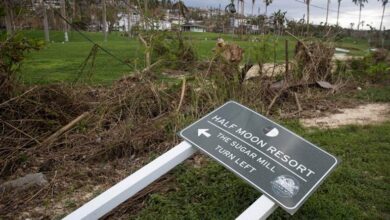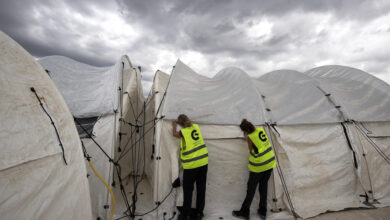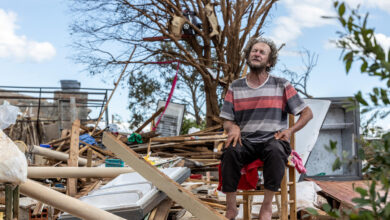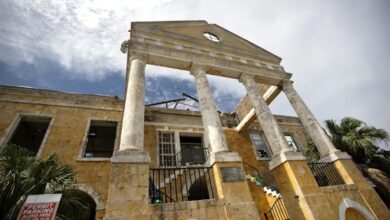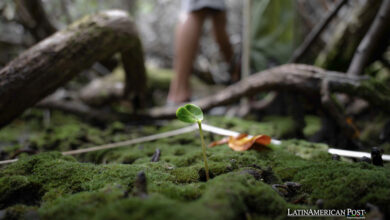Cave Valley Digs Out of the Mud As Jamaica's Heart Proves Unbreakable
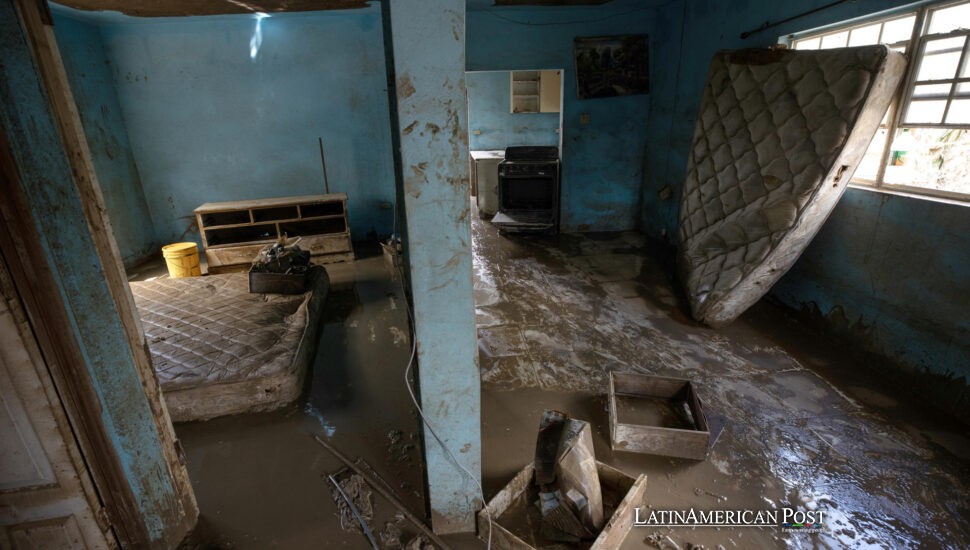
When Hurricane Melissa turned the Cave River into a wall of water, it swallowed homes, shops, and memories in minutes. Now, amid ankle-deep mud and broken light poles, neighbors wield shovels and solidarity, rebuilding a future the storm tried to wash away.
When The Cave River Overran Cave Valley
From the ridge above Cave Valley, the landscape still glows green under the Caribbean sun—lush, deceptive beauty concealing the violence that tore through it. Hurricane Melissa, a Category 5 monster, had ripped across Jamaica’s interior, pushing the Cave River over its banks and straight into the town’s heart.
Down below, the scars are unmistakable. Bent light poles lean like drunks over ditches. Banana groves lie flattened, their leaves plastered to the soil. Bamboo, once knitted into graceful arches over backroads, now lies tangled in fences and doorways. On the pastel houses that line the valley floor, mud stains reach the second floor, marking how high the water climbed and how much life it swallowed.
When the flood came, it didn’t rush—it surged. A brown avalanche of water and silt filled homes like bathtubs, carried away cars, and left behind a heavy paste that clung to everything. “The community of Cave Valley was completely flooded,” shop owner Christopher Campbell told EFE, surveying what had once been his family’s supermarket. “Now we are picking up everything that was damaged and cleaning.”
Inside, the soundscape is strange: metal scraping tile, water sloshing in buckets, the hollow roll of a wheelbarrow. Helpers hose down mannequins, rinse soft-drink bottles, and scrub refrigerators. Campbell gestures toward the wall where the waterline stands chest-high—1.2 meters of disaster. “This is the first time this building has flooded,” he said quietly.
By the time the current eased, the town center looked like a drained lakebed, its streets slick with gray sludge. The river had redrawn the map of people’s lives overnight.
Shovels, Buckets, And The Muscle Of Solidarity
Every block hums with labor. The rhythm of scraping, lifting, rinsing. Neighbors—some barefoot, others in rubber boots—move with a choreography born of necessity. Teenagers form bucket chains; elders direct traffic from porches. “Everything is completely devastated in this area,” said Patrick Jhon, a volunteer who drove from Manchester to help, speaking to EFE as he wiped sweat and mud from his face. “Everything is mud, only mud and water.”
He looked out over a street where furniture, soaked and swollen, leaned in piles beside broken doors. “It’s a long, difficult road back,” John added, frustration thickening his voice. “We need the government to act faster.” He doubts proper recovery will come before February or March, and suspects full reconstruction could stretch into five years. Until then, he said, “We keep trying to help our brothers and sisters… to look after each other and help each other right now.”
That’s how Cave Valley survives—through collective endurance, not outside rescue. On side streets, children pass pails hand to hand, their small bodies straining under the weight of sludge. Mothers drag mattresses to the curb, fathers pry swollen doors open. There is no shouting, no panic, just the dull rhythm of recovery. Jamaicans have rebuilt before; they know the steps by heart.
Yet repetition doesn’t numb the ache. Each storm chisels at the same truth: this island’s resilience is both blessing and burden. People rise every time—but they rise alone.
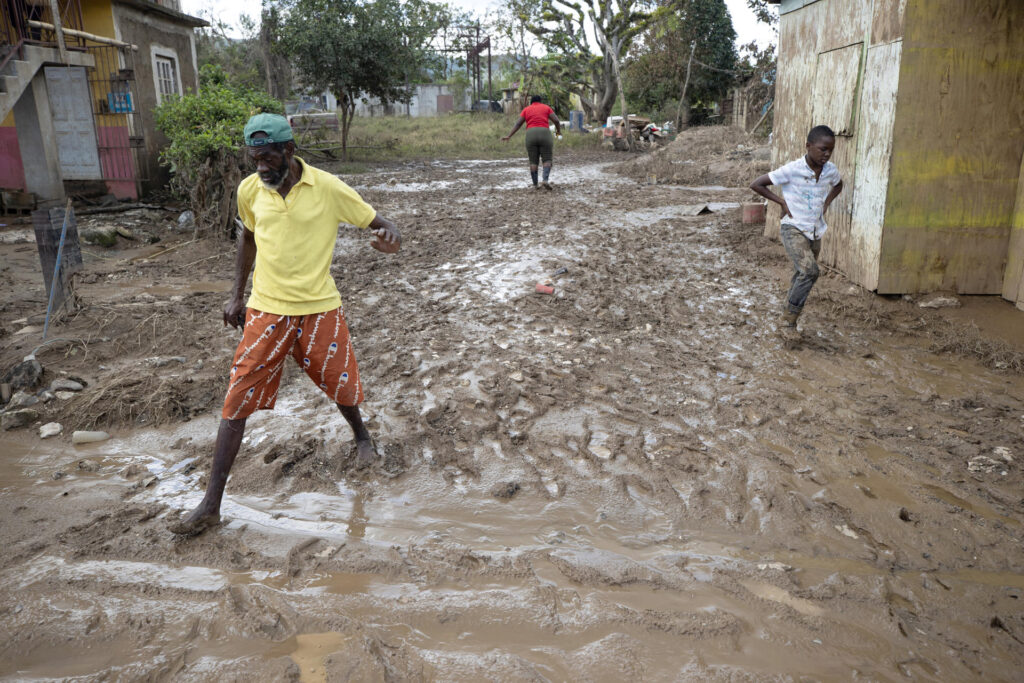
What Survival Looks Like Inside Flooded Homes
Inside a single-story house that once held three generations, the air smells of silt and detergent. The waterline cuts across the walls like a scar. Family portraits hang half-washed in clay, and the floor is carpeted in what used to be books and clothes. At the doorway, 22-year-old Sandreka Knight pushes out cushions so saturated they bleed mud when squeezed.
“We lost everything,” she told EFE, her voice steady but her hands trembling. “The only thing we grabbed was the documents.” Her parents, siblings, nieces, and nephews escaped just in time. They now sleep on a friend’s floor up the hill, one of the few places where the flood stopped short of disaster.
A few doors down, hardware store owner Robert Chen sorts through what’s left of his business: ledgers turned to pulp, computers crusted in dirt, a cash register rusted shut. The office smells of damp wood and despair. “I don’t even know where to begin,” he murmured, glancing toward the street where refrigerators, chairs, and tools lie waiting for a truck that might never come.
Farther along, the gas station stands like a monument to futility—plastic covers still draped over the pumps, useless against a river that decided to run straight through the forecourt. It’s a small image, but it says everything: Cave Valley is prepared for rain, not for water coming from every direction at once.
For Campbell, the shopkeeper, the math of recovery is merciless. Losses stack high, help arrives slow. Still, he counts blessings where he can. “The same people who lost their things are helping me clean mine,” he told EFE. “We’re saving what can be saved.” Mud, after all, makes no distinction—it covers rich and poor, believer and skeptic alike. But the human impulse to rebuild cuts through it.
The Long Road Back And Who Pays For It
As the days turn into weeks, Cave Valley’s recovery has become both a ritual and an endurance test. Each morning begins with mopping and scraping; each night ends with waiting—for assessments, for aid, for someone in power to notice. “It will take more than volunteer hands to fix this,” John warned EFE, echoing a sentiment whispered in every neighborhood: that resilience cannot forever substitute for investment.
Two shortages loom over the cleanup: time and money. Time for inspectors to declare houses habitable, time for new walls to dry before the next storm season. Money to buy drywall, to restock stores, to repair roads that now crumble at their edges. Without it, reconstruction becomes circular: what’s rebuilt this month may wash away the next.
Yet even in exhaustion, hope insists on showing up. The first shop that reopens will become a lighthouse for morale. The first classroom restored will remind parents that normalcy is possible. Each fixed bridge or road shortens the distance between survival and stability.
For Jamaica, the stakes go far beyond one valley. Every revived community becomes proof that the island can endure not just hurricanes but the bureaucratic storms that follow. Melissa left behind more than mud; it exposed the same divide that disasters always do—the gap between national promises and local survival.
Still, Cave Valley refuses to surrender. The mud on some floors is still knee-deep, but in others, the tiles are visible again, gleaming beneath a thin film of brown. Between what remains buried and what has been reclaimed, the town’s heart keeps beating.
And so the rhythm continues—one bucket, one broom, one repaired receipt book at a time—as Cave Valley proves, once more, that even when the river rises, Jamaica’s spirit increases higher.
Also Read: Black River After the Storm: Jamaica’s Battle Between Hunger, Hope, and the Sea

